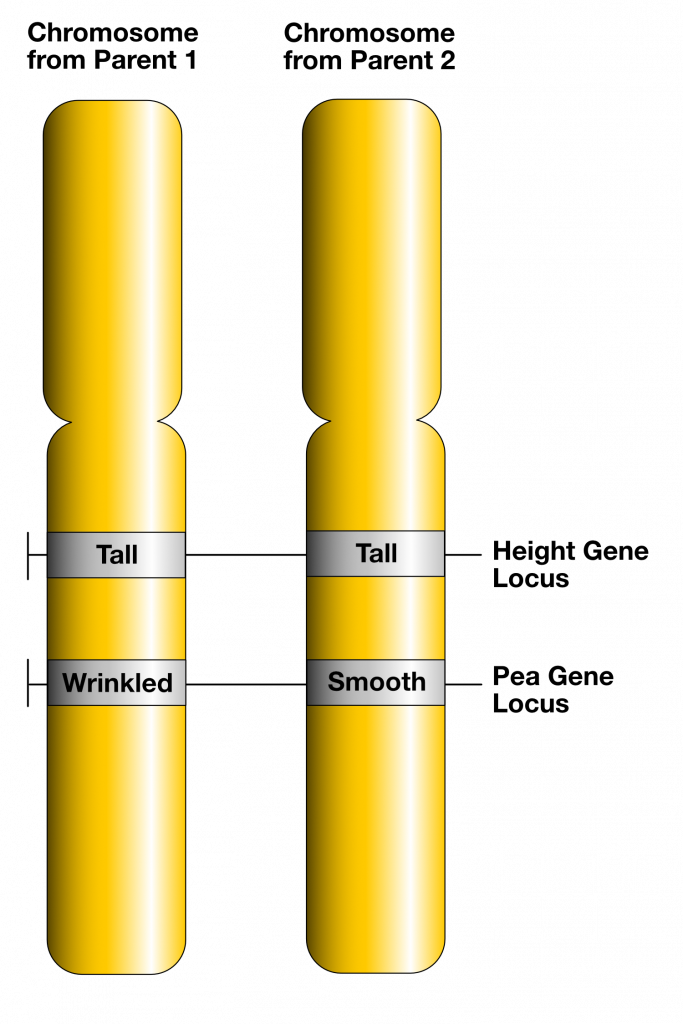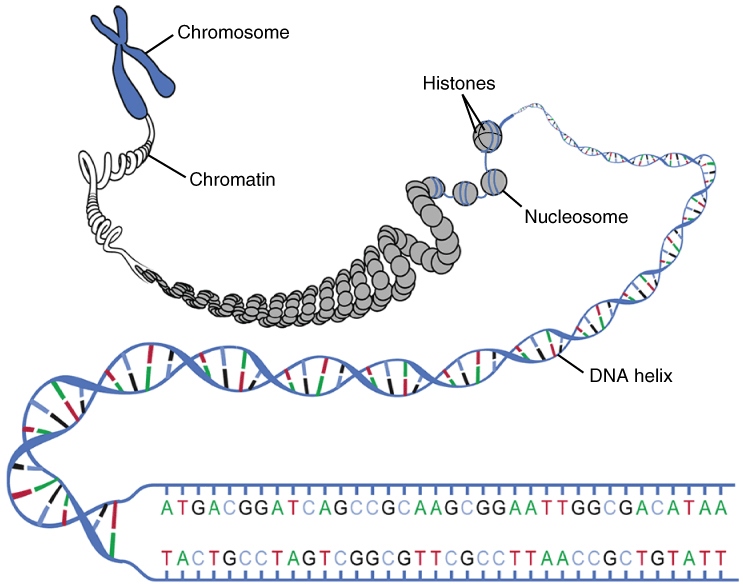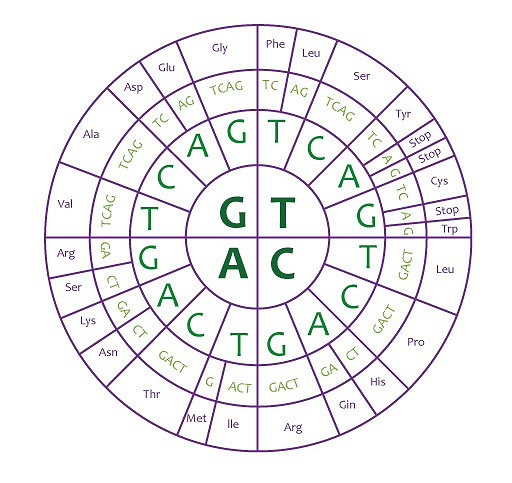Contents
DNA and the Genetic Code
DNA
A section of DNA contains a code for making a polypeptide and functional RNA. The code is a specific sequence of bases. Polypeptides make proteins, and genes determine the proteins of an organism. The location of a particular gene on a chromosome is called the locus.
Allele
An allele is one of a number of alternative forms of a gene. Most genes occur in two, occasionally more, different forms.
Chromosome
In a eukaryotic cell nucleus, DNA is stored as chromosomes. Humans have 23 pairs of chromosomes, 46 in total. Pairs of matching chromosomes are called homologous pairs.
For example, the two copies of chromosome 1 are homologous pairs. A homologous pair of chromosomes is exactly the same size, has exactly the same genes, but might have different alleles.
DNA in Eukaryotic DNA
The DNA is stored as chromosomes inside the chromosomes. In order to tightly coil the DNA to fit in the nucleus as chromosomes, the DNA is tightly wound around proteins called histones. This complex on DNA wrapped around a histone is called a nucleosome. Chromosomes in eukaryotic cells are linear in shape.
There is also DNA found in chloroplasts and mitochondria. This DNA is similar to prokaryotic DNA, in that it is short and circular.
DNA in Prokaryotic DNA
The DNA is still coiled and stored in chromosomes, but the chromosomes are free-floating in the nucleus and are not protein-bound. Chromosomes in prokaryotic cells are short and linear in shape.
The Genetic Code
The genetic code has three special features: it is degenerate, universal, and non-overlapping. At the start of every gene, there is a ‘start codon’ TAC in DNA or AUG in mRNA. This codes for the amino acid methionine. This methionine is later removed from the protein if it is not actually needed for the structure. At the end of every gene, there are 3 bases that do not code for an amino acid and are known as a ‘stop codon’. These stop codons mark the end of a polypeptide chain and stop translation from occurring further. These codons are ATT, ATC, and ACT on DNA.
Degenerate
There are 20 amino acids that the genetic code has to be able to code for. There are four DNA bases (GCTA), and therefore three bases are needed to make enough combinations to code for at least 20 amino acids. This can be proven mathematically.
If one base coded for one amino acid, this would only allow for 4 amino acids to be coded for. This is insufficient to code for 20 amino acids.
If two bases coded for one amino acid, this would allow for 16 amino acids to be coded for (4x4 combinations of code). This is insufficient to code for 20 amino acids.
If three bases coded for one amino acid, this would allow for 64 amino acids to be coded for (4 x 4 x 4 combinations of code).
64 combinations are more than is needed to code for 20 amino acids, and as a result, each amino acid is actually coded for by more than one triplet of bases. This is what is meant by the genetic code being degenerate. For example, tyrosine is coded for by ATA and ATG.
This genetic code wheel enables you to work out all combinations of bases that code for each of the 20 amino acids (the amino acids are on the outside of the wheel abbreviated to the first three letters of each one).
Universal
The same triplet of bases codes for the same amino acid in all organisms. This is why the genetic code is described as being universal.
Non-Overlapping
Each base in a gene is only part of one triplet of bases that codes for one amino acid. Therefore, each codon, or triplet of bases, is read as a discrete unit.
Introns and Exons
Introns are sections of DNA that do not code for amino acids and therefore polypeptide chains. These get removed, spliced, out of mRNA molecules. Exons are the sections of DNA that do code for amino acids.
The Genome and Proteome
The genome is an organism's complete set of DNA in one cell, whereas the proteome is the complete set of proteins in one cell. The genome should never change, whereas the proteome of the cell is constantly changing depending on which proteins are currently needed. The genome of organisms widely varies. For example, bacteria contain on average 600,000 DNA base pairs, whereas humans contain 3 billion DNA base pairs.
- What is the function of a histone protein? (B)
- Your answer should include: DNA / wrapped
- If all the DNA were distributed equally between the chromosomes, calculate the mean length of DNA in each one (in miles)
- 0.05
Explanation: Suppose the total length of all the DNA in a single human muscle cell is 2.3m - Calculate in mm the length of DNA in a human brain cell (in miles):
- 2300
Explanation: Suppose the total length of all the DNA in a single human muscle cell is 2.3m





